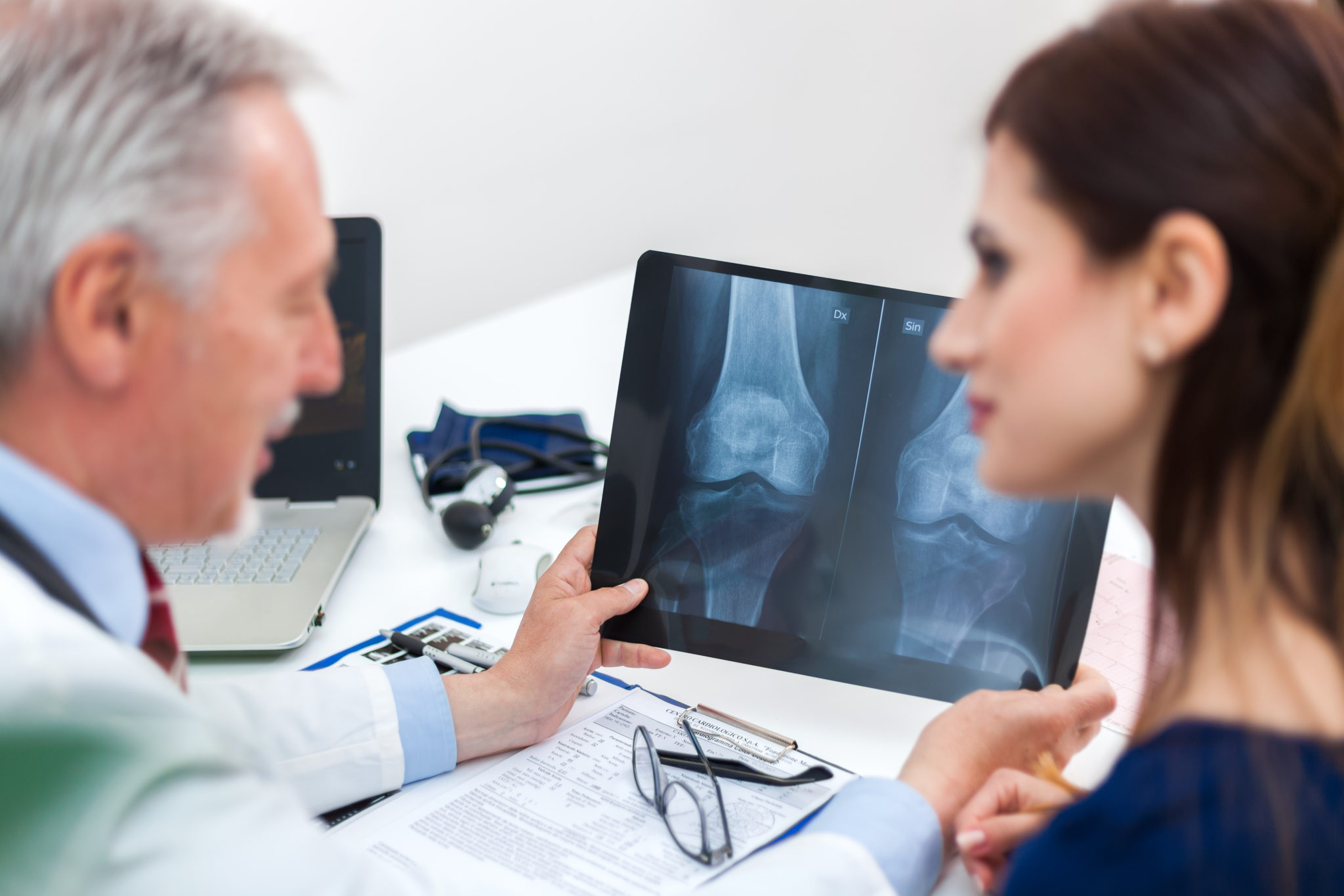
Osteoporosis is a common disease of the bone. It occurs when a person’s bone gets brittle, often because their body can no longer produce enough new bone to make up for bone loss. After age 50, osteoporosis becomes more common, and bones weakened by the disease lead to breaks in one in two women and one in five men. But, understanding what osteoporosis is, its symptoms and common steps to take to keep your bones healthy can help reduce your chances of a break.
What Causes Osteoporosis?
Bones don’t last forever. Our bodies are constantly producing new bone to replace old bone as it breaks down, but those steps happen at different rates. We produce bone faster than we lose it when we’re growing, but we start to produce it more slowly as we age. Most people will have their bone mass peak around their early twenties, and will suffer from increasing bone loss from that point on.
That natural loss causes osteoporosis. People who lose bone unusually quickly are more likely to suffer the symptoms of the disease. There are quite a few risk factors for that:
- Women are more likely to develop osteoporosis than men.
- Old age is strongly linked to the disease.
- Poor diets make osteoporosis more likely.
- Many medical issues, such as gland problems, can also harm the bone.
Signs and Symptoms of Osteoporosis
People rarely suffer from serious symptoms in the early stages of osteoporosis. That changes as the case gets more severe. Bones are a fundamental part of our bodies and weakening them can cause plenty of problems in the long run.
The most iconic symptoms are the loss of height and the development of a hunched posture. Many patients also suffer from pain in their lower back. Those symptoms can all cause discomfort and various inconveniences, but the disease can also cause serious injuries. People who suffer from osteoporosis are far more vulnerable to bone fractures than the general population. That can turn a small fall or minor accident into a serious medical problem with effects that can last for a long time.
Preventing Osteoporosis
We encourage people to take steps to prevent osteoporosis. Nobody can completely eliminate their risk of developing it, but there are a lot of ways to reduce that risk. In most cases, the best way is to make lifestyle changes.
Diet is a major factor. People who want to keep their bones healthy should get plenty of calcium because it is a major component in bones. Vitamin D is also crucial because it helps the body put that calcium to use. Protein is also an important material.
It is also important to maintain a healthy body weight and get plenty of exercise. People who are too heavy and those who are too light both suffer from an increased risk of fractures. A sedentary lifestyle weakens the bones and is best avoided. The combination of a healthy diet and exercise will help to fight all of those problems and maintain general health. It is generally wise to talk to a doctor or dietician when building a diet and exercise plan to make sure it is safe and healthy.
Getting Help
We encourage people to talk to a doctor about osteoporosis if they feel they are at risk. Those who have gone through early menopause or have a family history of osteoporosis should certainly do so, but it can be wise for anyone with symptoms. When in doubt, it is always best to check for potential problems in order to prevent them from getting worse.
